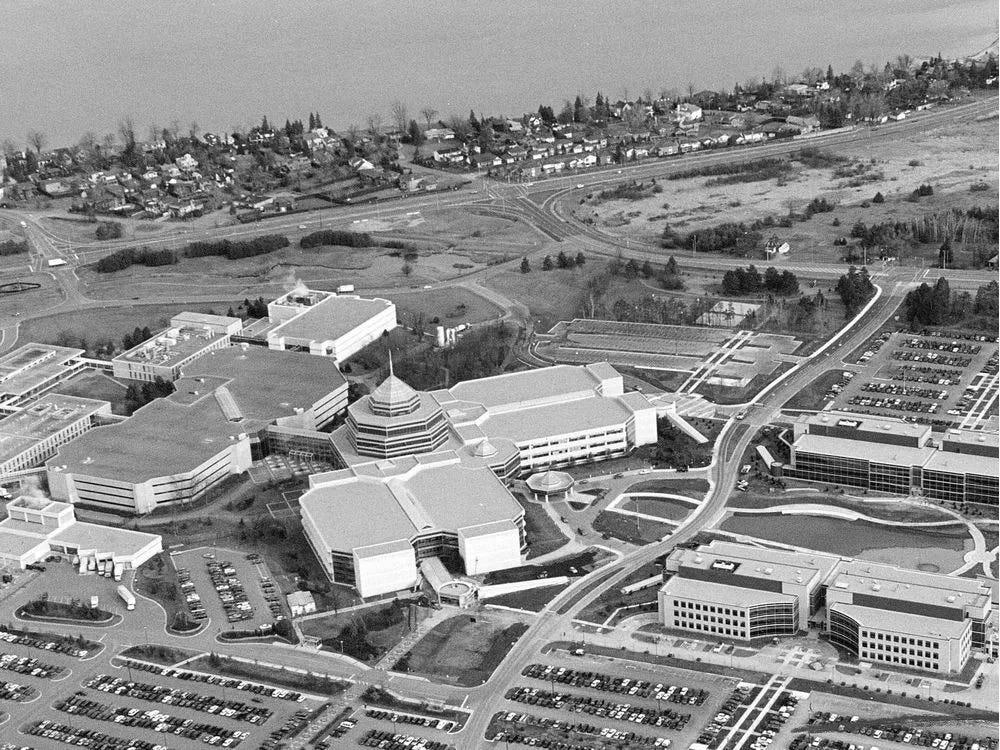The Little Guy Eats the Big Guy
Lessons from Bell-Northern Research, AT&T, and the Rise of DeWi Against Telcos
In the trenches of technological disruption, the story of Bell-Northern Research (BNR) and its relationship with AT&T serves as a classic tale of innovation challenging incumbency. Today, decentralized wireless (DeWi) networks are writing a similar narrative against traditional telecom giants.
While the specifics differ, the underlying dynamics remain strikingly familiar: nimble innovators exploiting overlooked opportunities, technological shifts creating leverage, and legacy giants underestimating the potential of decentralized systems.
The Rise of Bell-Northern Research (BNR)
In the mid-20th century, AT&T held an iron grip on telecommunication infrastructure in North America. Bell Labs, its famed research arm, was synonymous with groundbreaking technological advancements, including the transistor and fiber optics. However, dominance breeds inertia, and AT&T grew increasingly bureaucratic and risk-averse.
Enter Bell-Northern Research, a Canadian R&D powerhouse founded in 1971 through a partnership between Northern Electric and Bell Canada. Unlike Bell Labs, BNR was leaner, more experimental, and focused on practical innovation. It became instrumental in pioneering digital switching systems, particularly with the DMS-100, a revolutionary digital switch that transformed telephony.
While AT&T was fixated on analog systems and incremental improvements, BNR leaped ahead with digital solutions that were more scalable, efficient, and adaptable. Northern Telecom (later Nortel) capitalized on BNR's breakthroughs, grabbing significant market share from AT&T.
Enter the DeWi Era
Fast forward to today, and we see echoes of this battle in the decentralized wireless (DeWi) movement. Projects like Helium are challenging traditional telecom providers by building decentralized wireless networks powered by blockchain technology and community participation.
DeWi leverages the inefficiencies of legacy telecom systems: massive capital expenditure, centralized infrastructure, and slow innovation cycles. Much like BNR's focus on digital switching in a world dominated by analog, DeWi focuses on lightweight, scalable infrastructure that turns everyday devices and individuals into network providers.
Where traditional telecoms rely on billion-dollar deployments of towers and fiber optics, DeWi networks harness existing infrastructure and consumer-grade hardware to create flexible, community-powered networks.
Key Parallels Between BNR vs. AT&T and DeWi vs. Telcos
Technological Shifts: BNR bet on digital switching, while DeWi bets on blockchain and token incentives. Both technological bets bypassed incumbent bottlenecks.
Agility vs. Inertia: BNR operated with a nimble, innovative structure compared to AT&T's bureaucracy. Similarly, DeWi projects iterate rapidly and pivot effectively compared to risk-averse telecom giants.
Resource Efficiency: BNR's digital switches reduced infrastructure costs. DeWi minimizes the need for centralized infrastructure by incentivizing community contributions.
Underdog Advantage: AT&T, blinded by its market dominance, underestimated BNR's innovation. Telcos today similarly overlook the long-term potential of decentralized networks.
The Challenges Ahead for DeWi
However, it's not all smooth sailing. Nortel, despite BNR's successes, ultimately collapsed due to poor management and market missteps. DeWi networks face their own existential challenges:
Regulatory Hurdles: Telecom is one of the most heavily regulated industries globally, and decentralized networks operate in a gray area.
Scalability: While community-driven networks are efficient, scaling them to meet global demand remains a challenge.
Interoperability: Fragmented DeWi networks risk becoming silos without robust standards for interoperability.
What Can DeWi Learn from BNR?
Focus on Practical Innovation: BNR's success lay in solving immediate problems with digital switches. DeWi must similarly prioritize real-world utility over speculative tokenomics.
Partnerships Matter: Bell Canada’s support gave BNR legitimacy. DeWi networks should seek partnerships with progressive telecom providers.
Guard Against Complacency: Nortel's downfall stemmed from poor long-term strategy. DeWi must remain agile even as they grow.
The Road Ahead
Just as BNR reshaped telecom infrastructure, DeWi has the potential to redefine connectivity in the 21st century. Whether it’s providing affordable connectivity in underserved regions, enabling IoT networks, or creating privacy-preserving wireless infrastructure, DeWi represents a fundamental shift.
The question remains: will traditional telcos learn from AT&T's historical missteps, or will they, once again, be disrupted by the little guy with a bold vision and better technology? Only time will tell, but history suggests that the incumbents should be watching their rear-view mirrors very closely.



